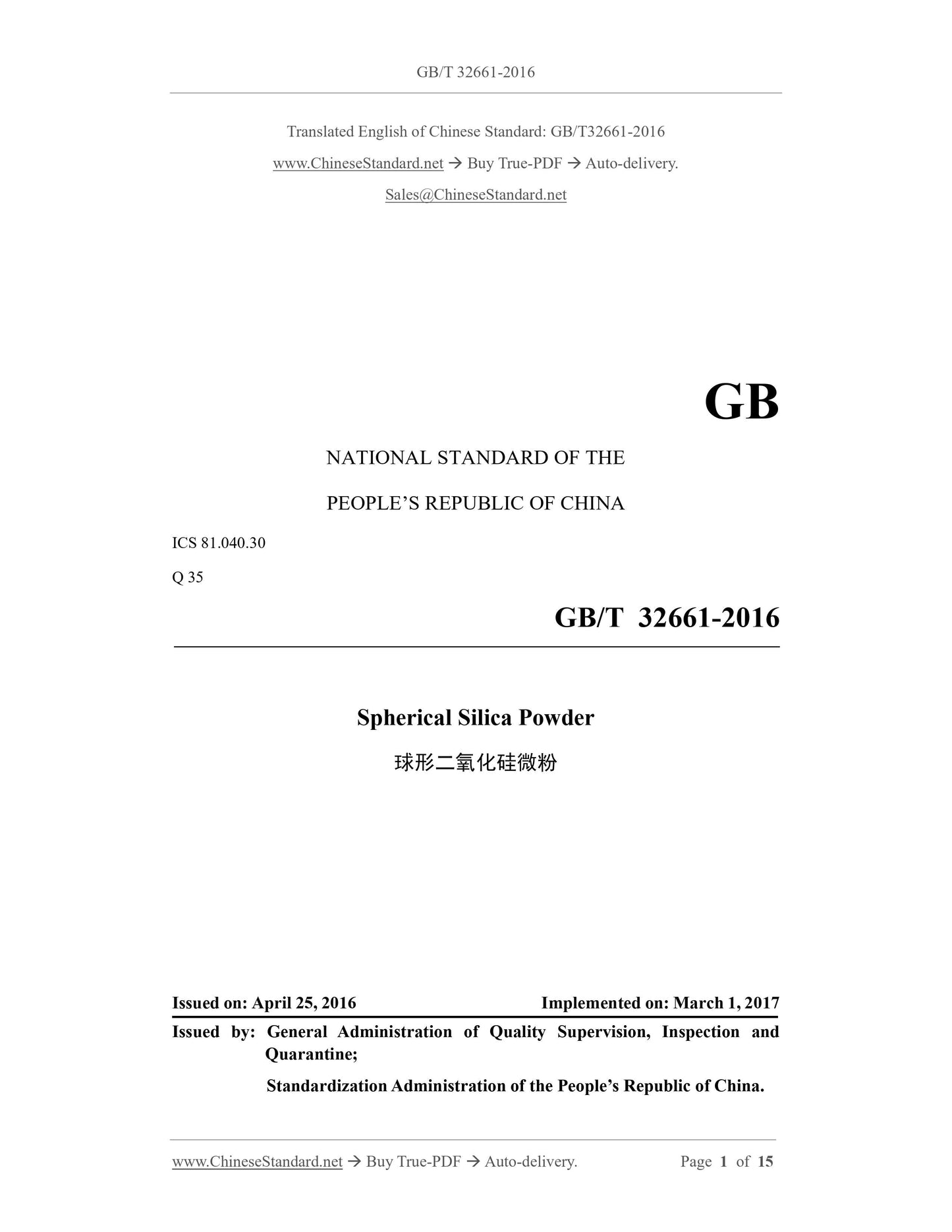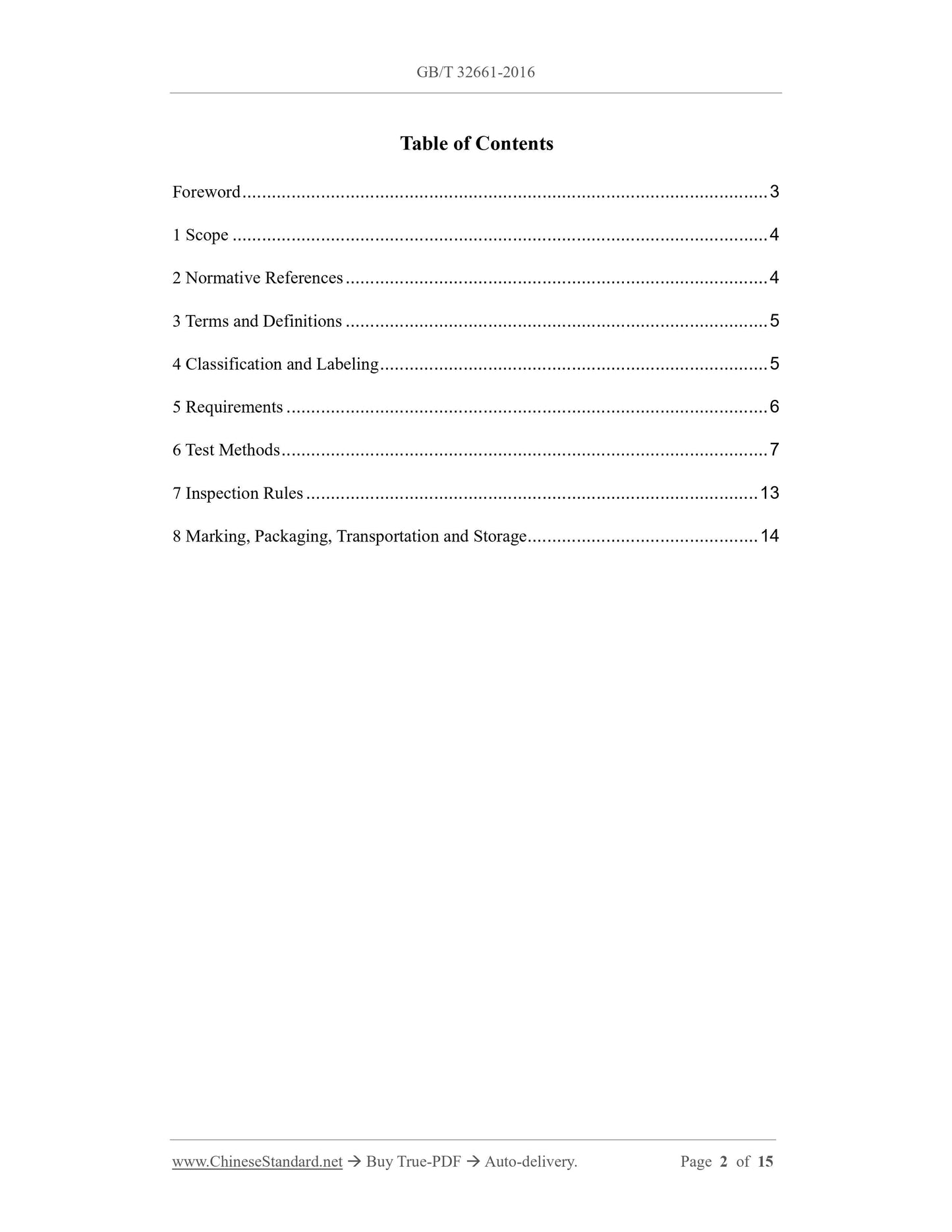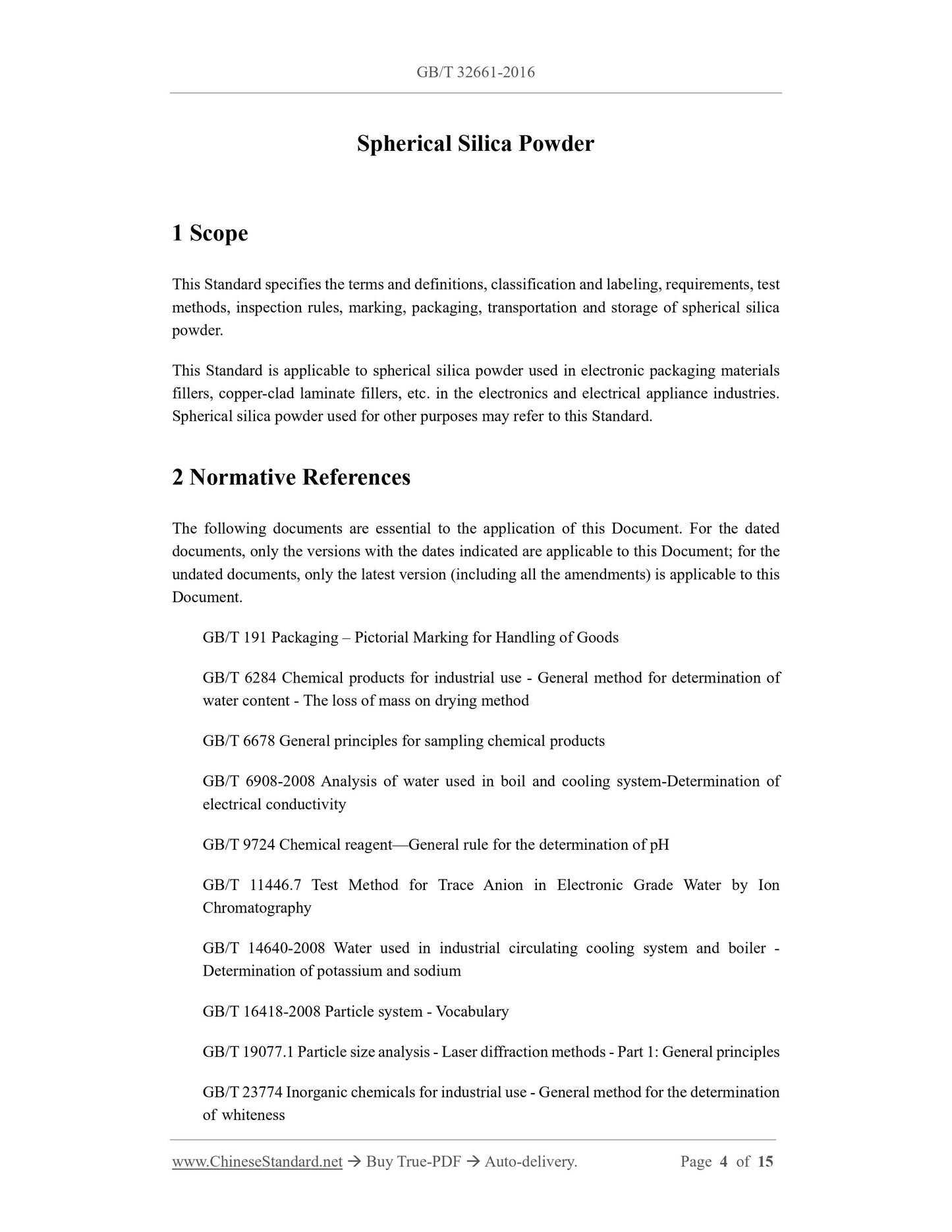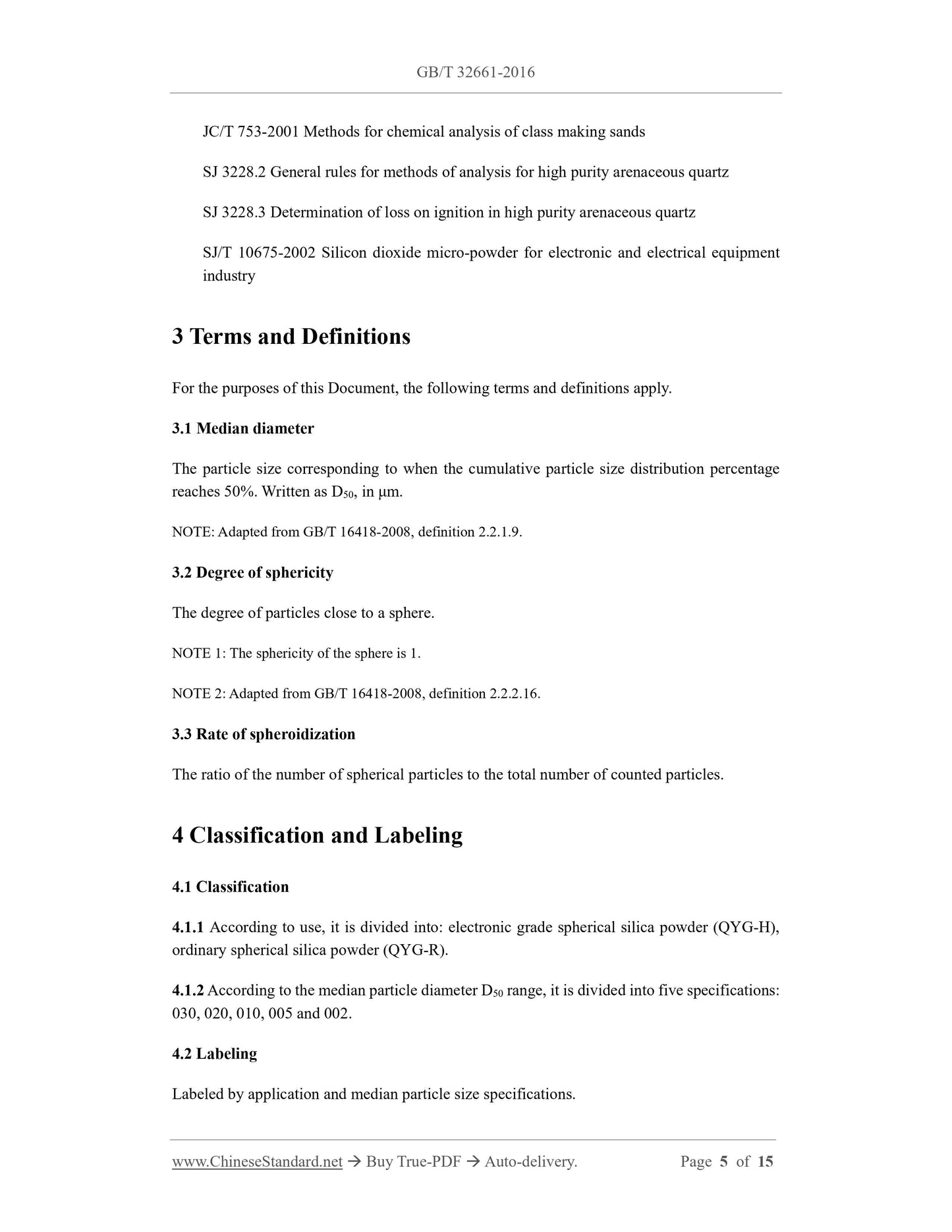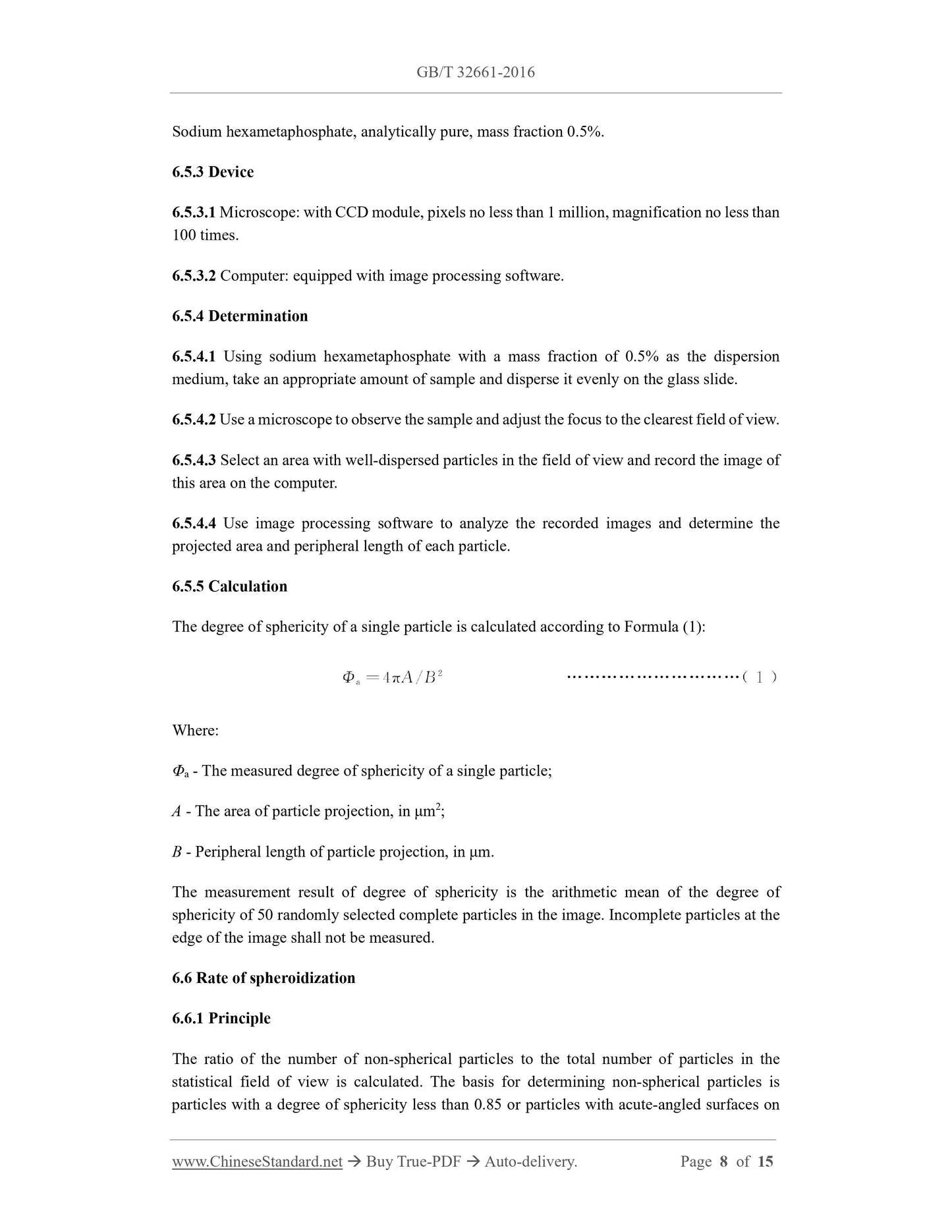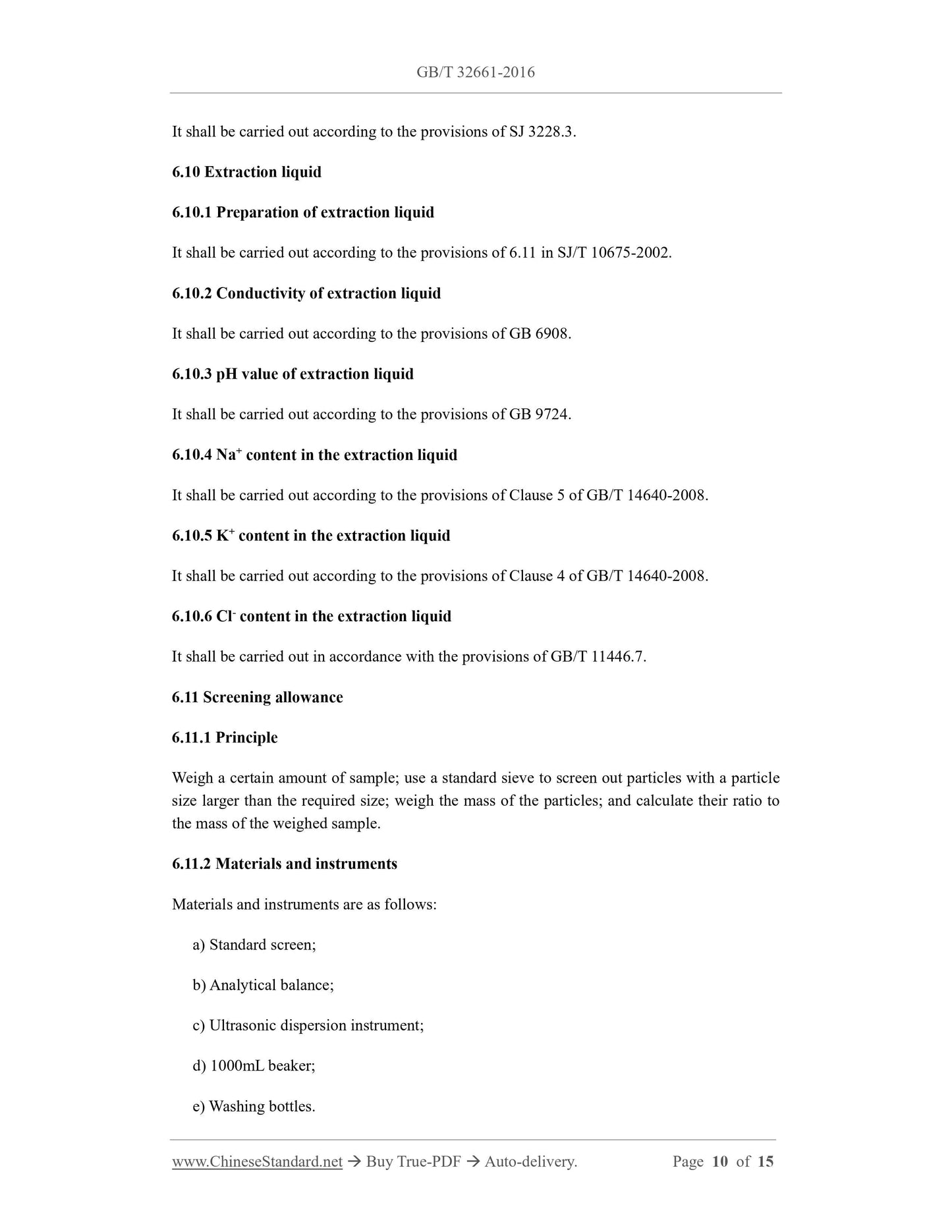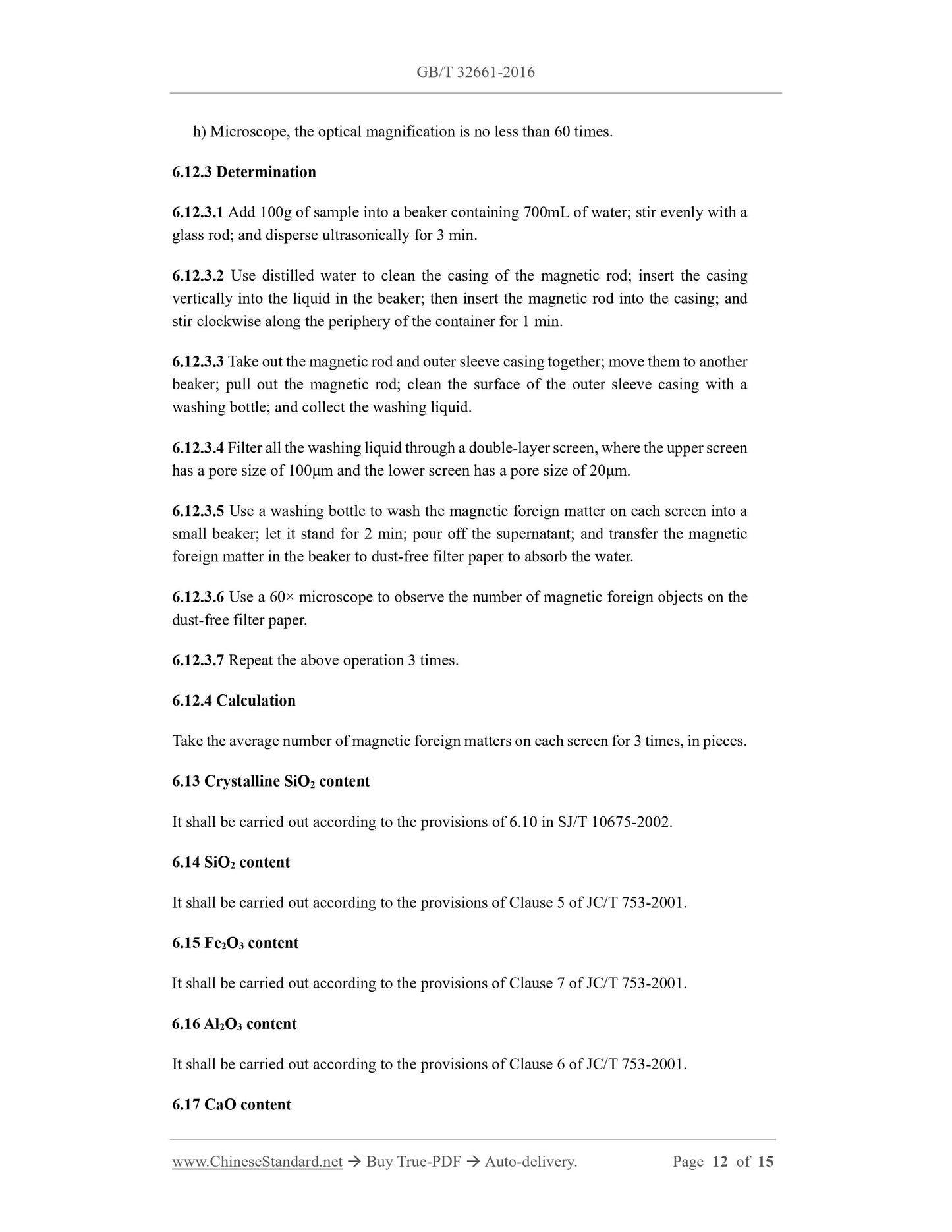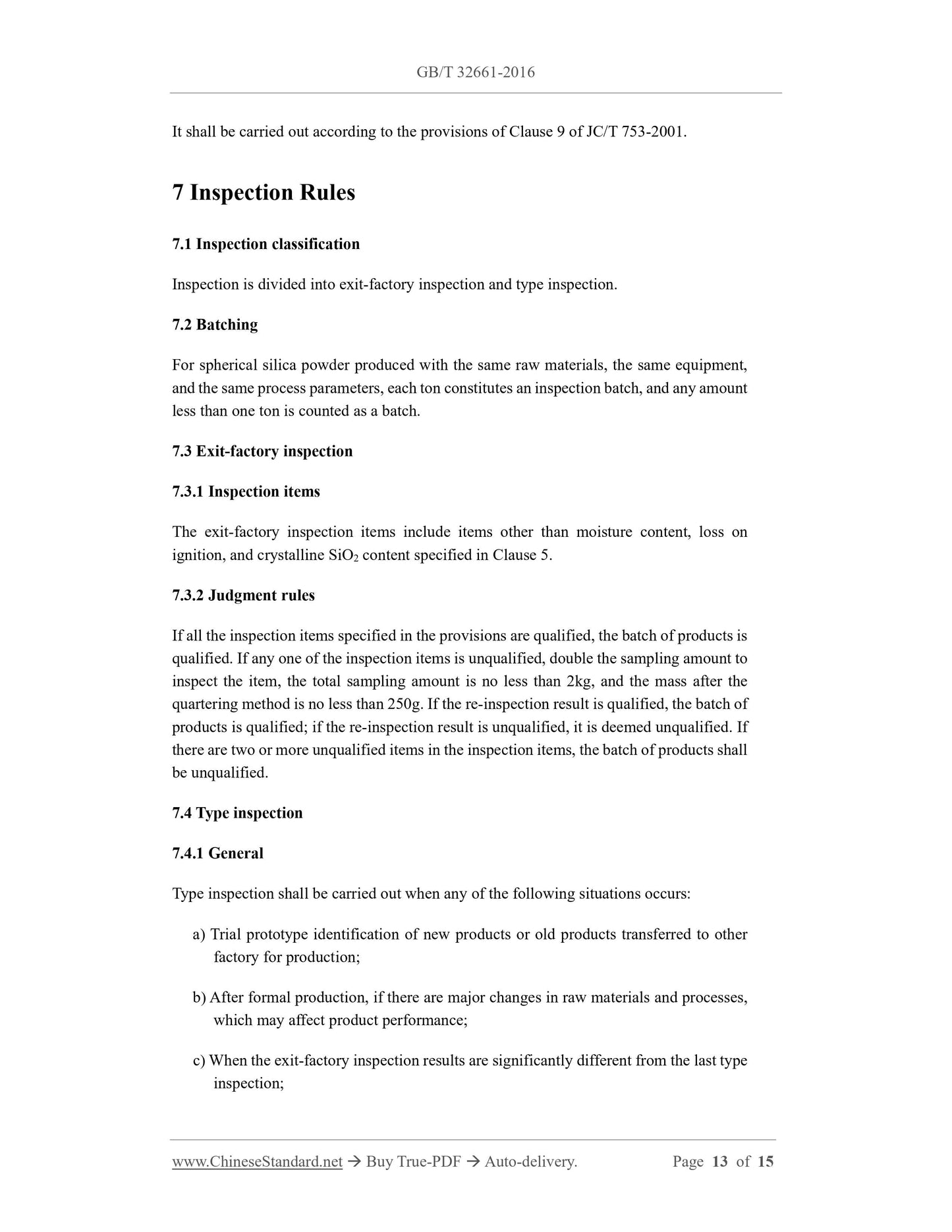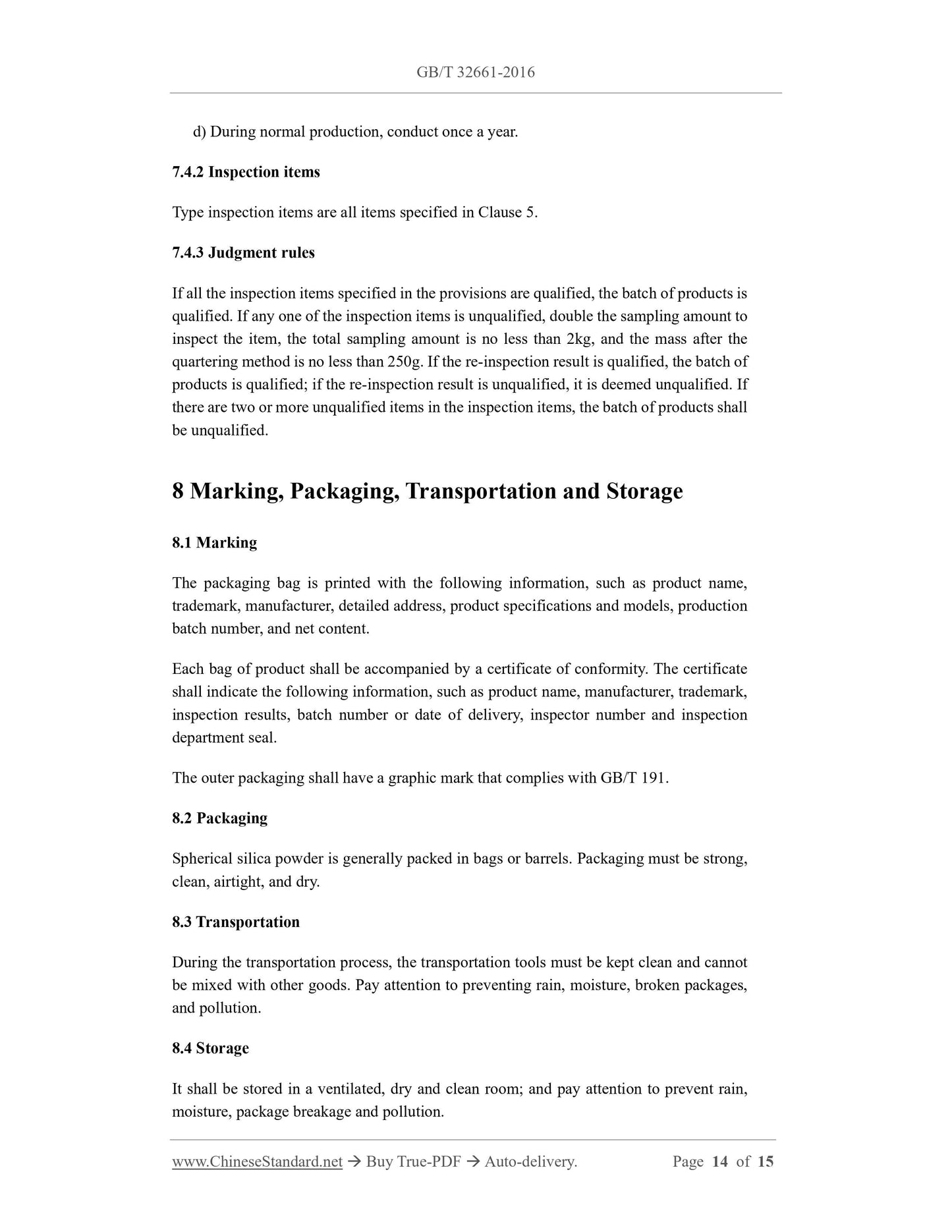1
/
of
9
www.ChineseStandard.us -- Field Test Asia Pte. Ltd.
GB/T 32661-2016 English PDF (GB/T32661-2016)
GB/T 32661-2016 English PDF (GB/T32661-2016)
Regular price
$160.00
Regular price
Sale price
$160.00
Unit price
/
per
Shipping calculated at checkout.
Couldn't load pickup availability
GB/T 32661-2016: Spherical silica powder
Delivery: 9 seconds. Download (and Email) true-PDF + Invoice.Get Quotation: Click GB/T 32661-2016 (Self-service in 1-minute)
Newer / historical versions: GB/T 32661-2016
Preview True-PDF
Scope
This Standard specifies the terms and definitions, classification and labeling, requirements, testmethods, inspection rules, marking, packaging, transportation and storage of spherical silica
powder.
This Standard is applicable to spherical silica powder used in electronic packaging materials
fillers, copper-clad laminate fillers, etc. in the electronics and electrical appliance industries.
Spherical silica powder used for other purposes may refer to this Standard.
Basic Data
| Standard ID | GB/T 32661-2016 (GB/T32661-2016) |
| Description (Translated English) | Spherical silica powder |
| Sector / Industry | National Standard (Recommended) |
| Classification of Chinese Standard | Q35 |
| Classification of International Standard | 81.040.30 |
| Word Count Estimation | 11,124 |
| Date of Issue | 2016-04-25 |
| Date of Implementation | 2017-03-01 |
| Regulation (derived from) | National Standard Announcement No |
| Issuing agency(ies) | General Administration of Quality Supervision, Inspection and Quarantine of the People's Republic of China, Standardization Administration of the People's Republic of China |
Share
